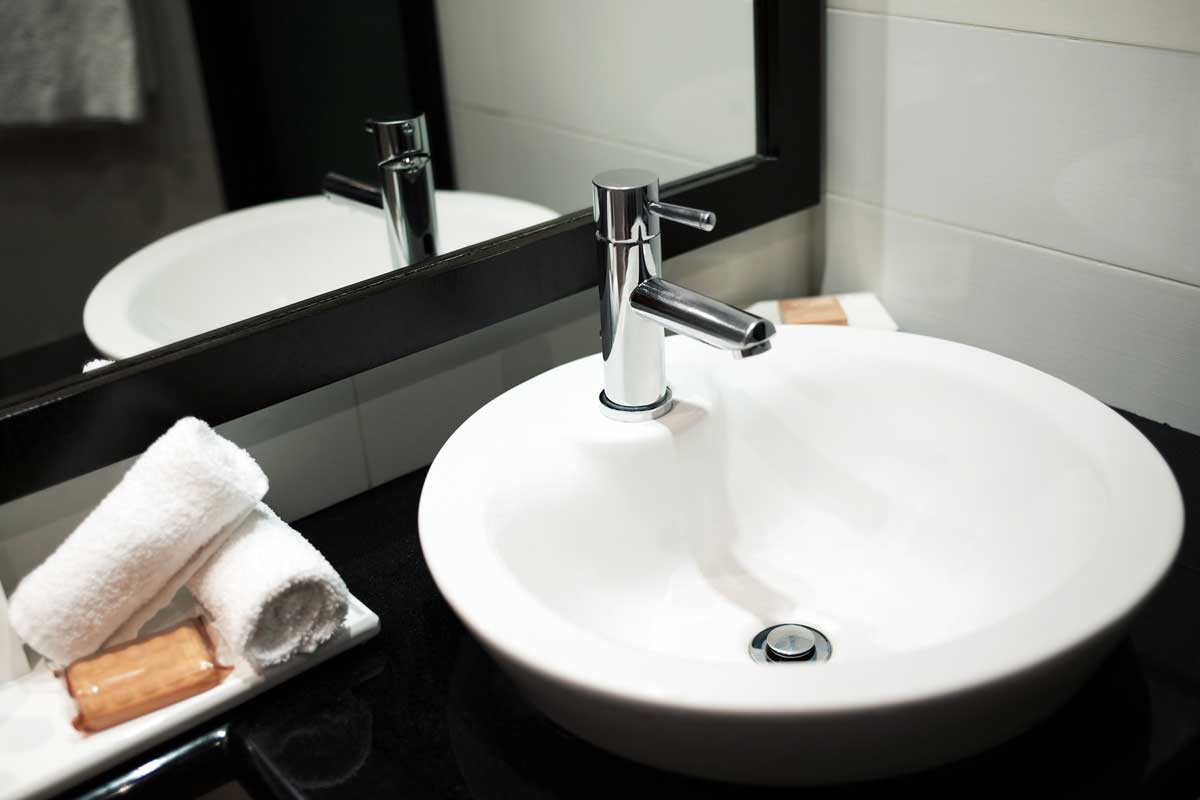Planning and Preparation: Fitting A New Bathroom Sink

Fitting a new bathroom sink – Before starting any bathroom sink installation project, it’s essential to gather the necessary tools and materials and plan each step carefully.
The essential tools you’ll need include a wrench, pliers, a screwdriver, a level, a tape measure, and a utility knife. Materials-wise, you’ll need a new sink, a drain assembly, a faucet, and caulk.
Removing the Old Sink
Once you have your tools and materials ready, you can begin by removing the old sink. First, turn off the water supply to the sink and disconnect the water supply lines. Next, remove the drain stopper and unscrew the drainpipe from the sink. Finally, detach the sink from the countertop and lift it out of place.
As you embark on the transformative task of fitting a new bathroom sink, selecting the perfect faucet is paramount. Explore a wide range of single bathroom sink faucets that complement the aesthetic of your space and elevate your daily routines.
From sleek and modern designs to timeless classics, each faucet adds a touch of elegance and functionality to your newly fitted sink.
Measuring and Marking the Location for the New Sink, Fitting a new bathroom sink
With the old sink removed, you can now measure and mark the location for the new sink. Place the new sink in the desired location and trace around the edges with a pencil. Then, use a level to ensure that the sink is level both front to back and side to side. Once you’re satisfied with the placement, mark the location of the drain hole and the faucet holes.
Fitting a new bathroom sink can be a simple yet effective way to upgrade your bathroom’s aesthetics. If you’re looking for a classic and timeless option, consider a round drop in bathroom sink. Its smooth, curved edges and versatile design make it suitable for various bathroom styles.
Whether you prefer a modern, traditional, or transitional look, a round drop-in sink can seamlessly blend in and enhance the overall ambiance of your bathroom. With its durability and ease of maintenance, fitting a new bathroom sink is a worthwhile investment that will add value to your home.
Installation Process

Installing a new bathroom sink requires careful attention to detail and proper execution to ensure a leak-free and functional setup. This section will guide you through the crucial steps involved in connecting the water supply lines, installing the drain assembly, and securing the sink to the countertop.
Connecting Water Supply Lines
Connect the flexible water supply lines to the corresponding hot and cold water valves under the sink. Use adjustable wrenches to tighten the nuts hand-tight, then give them an additional quarter turn with the wrench. Avoid overtightening, as this can damage the lines or fittings.
Installing Drain Assembly
Assemble the drain assembly by attaching the tailpiece to the sink drain hole. Apply plumber’s putty around the base of the tailpiece and insert it into the drain hole. Tighten the mounting nut from underneath the sink to secure the assembly. Ensure a snug fit to prevent leaks.
Securing the Sink
Place the sink into the countertop cutout and align it correctly. Apply a bead of silicone caulk around the perimeter of the sink where it meets the countertop. Carefully lower the sink into place and press down firmly to ensure good contact between the caulk and surfaces. Wipe away any excess caulk and allow it to cure completely before using the sink.
Finishing Touches

The final touches to your new bathroom sink will not only enhance its functionality but also add a touch of personal style. Let’s explore the essential finishing elements and how to execute them flawlessly.
Caulking
Caulking around the sink is crucial to prevent water damage and ensure a watertight seal. Choose a high-quality caulk specifically designed for bathroom use, and apply it carefully around the sink’s perimeter where it meets the countertop. Smooth out the caulk using a wet finger or a caulk finishing tool for a professional-looking finish.
Faucets
Faucets come in a wide variety of styles, finishes, and functions. Select a faucet that complements the sink’s design and meets your functional needs. For installation, follow the manufacturer’s instructions carefully. Typically, this involves connecting the faucet to the water supply lines, securing it to the sink, and testing for leaks.
Accessories
Accessorizing the bathroom sink area can enhance both its functionality and aesthetics. Consider adding a soap dispenser for convenience and hygiene. A toothbrush holder keeps toothbrushes organized and off the counter. Other accessories like a cup holder or a towel bar can further personalize the space and add a touch of style.